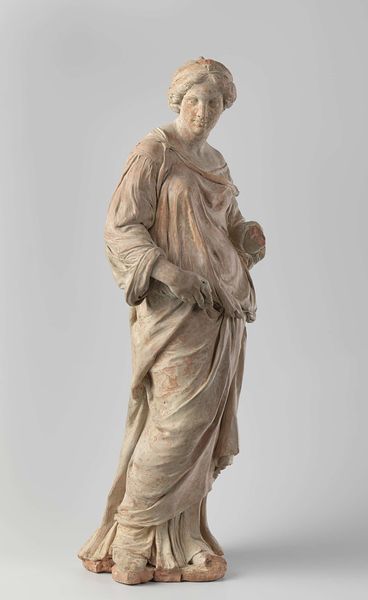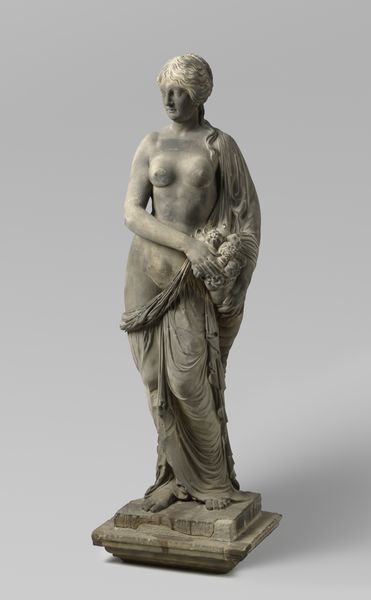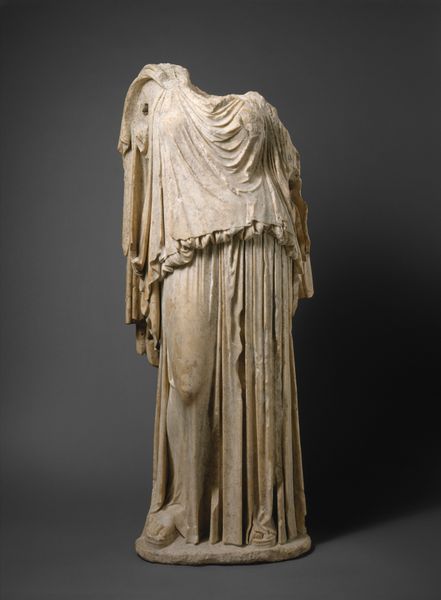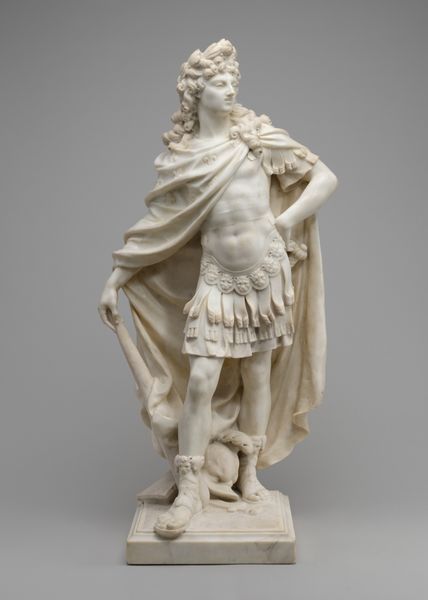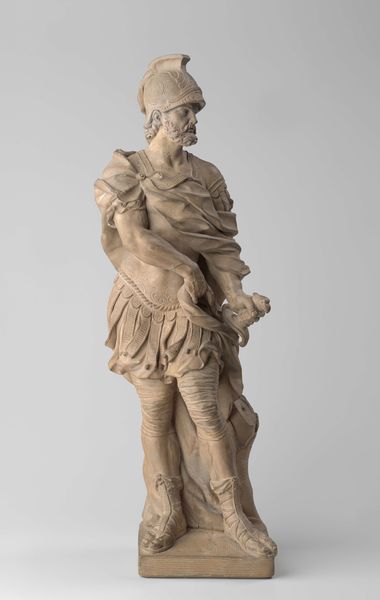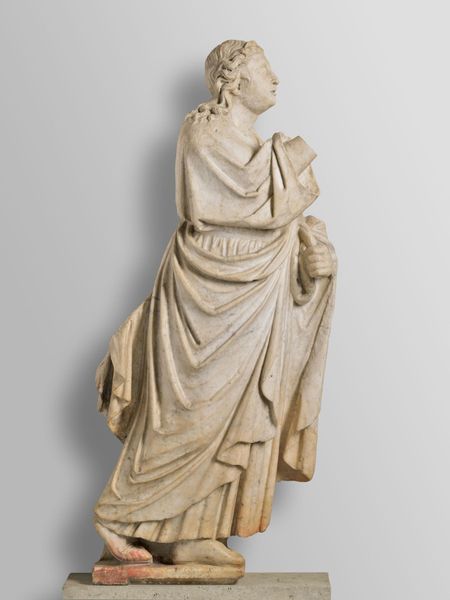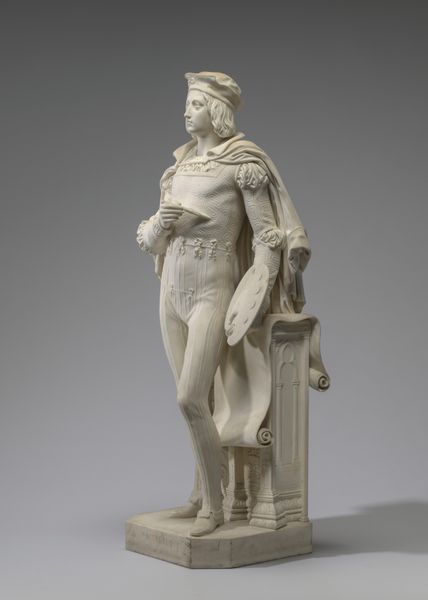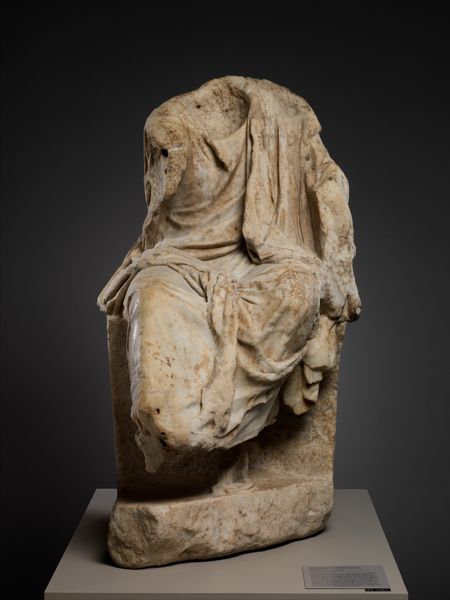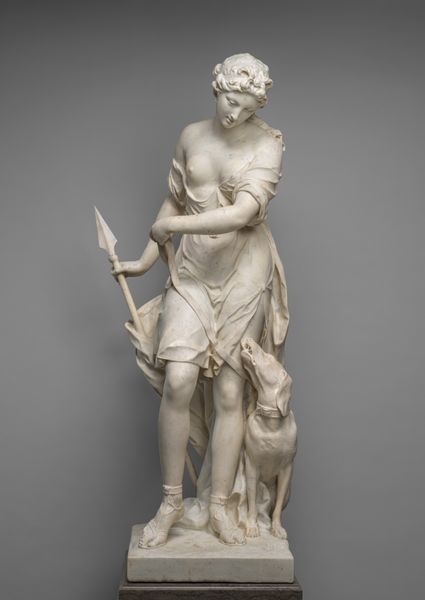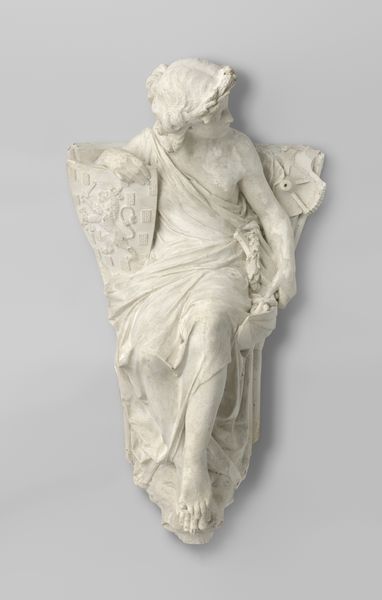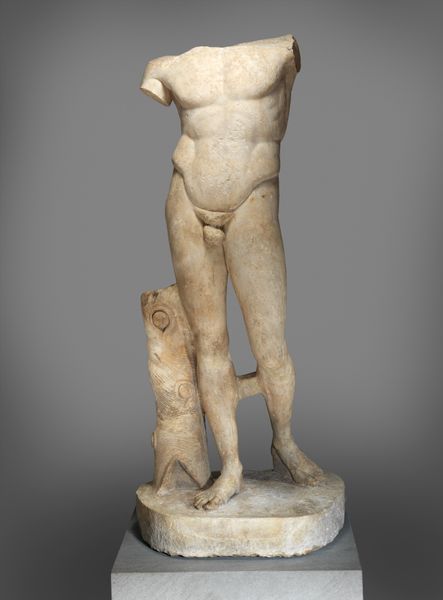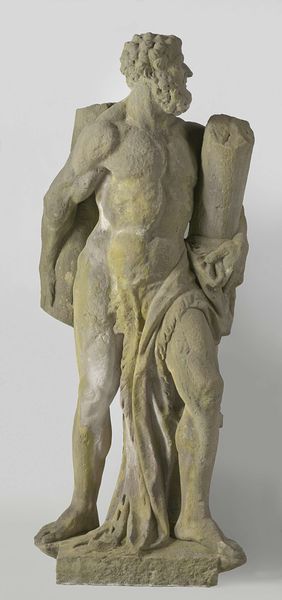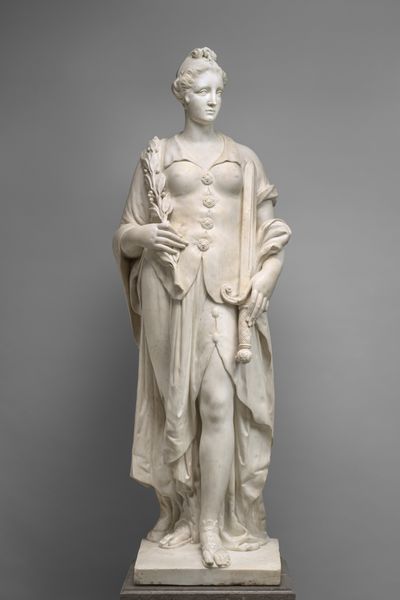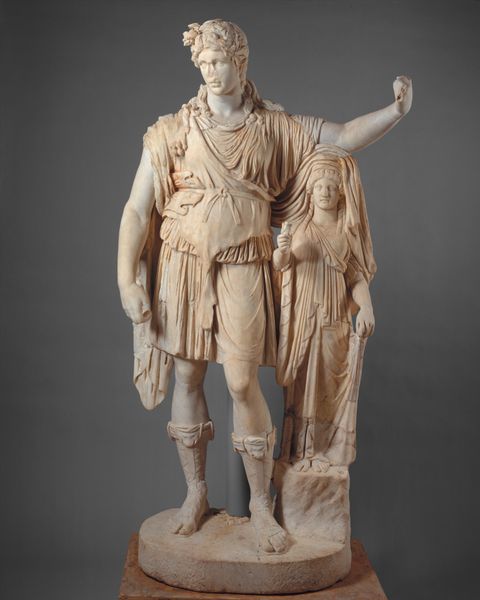
sculpture, marble
#
allegory
#
baroque
#
classical-realism
#
figuration
#
sculpture
#
marble
Dimensions: height 196 cm, width 62 cm, depth 52 cm, weight 336.5 kg, height 85 cm, width 60 cm, depth 51 cm, weight 353 kg, width 47 cm, depth 61 cm
Copyright: Rijks Museum: Open Domain
Pieter Adriaensz 't Hooft created this marble sculpture "Providentia/Oeconomia" sometime between 1610 and 1650. The Dutch Golden Age saw a burgeoning merchant class eager to express its values through art. Here, we see the embodiment of both Providence, representing foresight, and Oeconomy, the careful management of resources. These virtues would have been crucial for Dutch traders navigating global markets. Carved in marble, the figure is draped in classical garb, her gaze cast downward in contemplation. Her bare feet root her to the earth, a symbol of grounding amidst worldly pursuits. The combination of these two virtues suggests a world view which finds a balance between cautious planning and the understanding that fate plays its part. The sculpture suggests the values of thrift, planning, and prudence, which are intertwined with a sense of a divinely ordained path. It reflects a society grappling with its newfound wealth and influence, seeking to reconcile earthly success with spiritual values. In viewing this sculpture, one might wonder, how do we balance our ambitions with a sense of responsibility and fate?
Comments
No comments
Be the first to comment and join the conversation on the ultimate creative platform.
